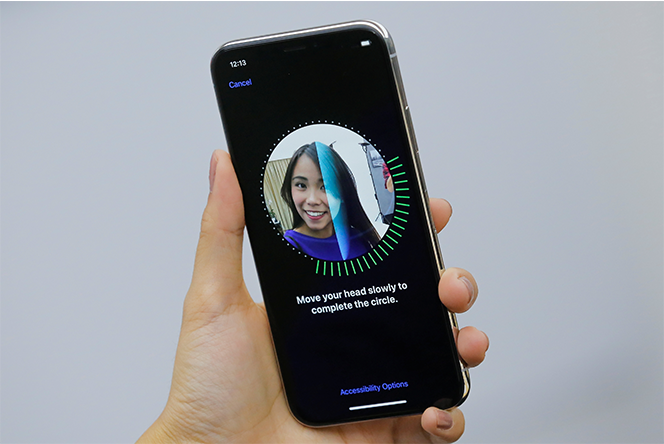Rethinking the restaurant user experience today for tomorrow.
New customer expectations are transforming the restaurant of today to anticipate that of tomorrow : digitalization of journeys, sharing and personalization via social networks, inclusion of the Internet of Things (IoT)…
#food is everywhere. It has become an essential hashtag on our social networks (#pornfood, #foodista on Instagram). But what about the user experience in this area? This sector is based on the e-commerce model. He engages in the phygital.
The issue of loyalty and response to new consumer expectations for their meals is at stake. We looked at this transformation of the restaurant pushed by the customer himself. We share with you our criteria in order to provide an unforgettable experience for e-gourmets.
The revolution around the plate
Authentic, organic, gourmet... The customer is ROI (return on investment). He is the one who is shaking up the food sector (e.g. Mac Donalds releases a burger Great Veggie…)
What do we want to eat?
79% of French people are vigilant about the quality and traceability of what they eat in 2017. A number that shows how much the restaurant must adapt and reinvent itself.
How do we want to eat?
- 62% declare an online review after going to a restaurant
- 58% would like to receive information by SMS about offers and news
- 45% would like to choose their table online
- 28% would like restaurateurs to record their previous tastes and choices to offer them dishes likely to please them next time.
(Study published by GECO Foodservice and Decryptis)
Revealing trends
We notice that the codes of the meal have completely changed. People want to eat something tasty, without enduring constraints such as waiting or time in general.
Today we want to choose what time we want to eat, specify what we like, what we want and how we want it. Personalization has never been so extensive.
Do it Yourself (DIY)
Preparing yourself, following a recipe quickly, feeling like a chef, taking control of your meal experience… Video tutorials keep popping up on social networks. They consolidate this DIY trend.
This reveals a strong desire to take full part in the experience, to become its “spect-actor”

Delivery
Dish delivery is one of the big success trends of 2017.
There are more and more couriers on the streets. Everything is done directly on the site or the application, you can even follow your delivery person and pay online. The user wishes to have lunch or dinner without constraint, at the time he wishes and without devoting too much energy and time to it. Consumers now accustomed to a fluidity of service expect a fast and “small onion” experience.

Users want to make organic, homemade, healthy food by themselves (#healthyfood) and share it on Instagram (#foodista).
And quit is the perfect example. They offer one basket per month with ingredients for 4 recipes. A small recipe booklet accompanies the basket.
The idea is to highlight quality, fresh products and encourage recycling. This latest trend reveals how much the user pays attention to what he eats, he wants seasonal products, fresh products, local products and transparency on the origin. He wants to participate in a new, more eco-responsible mode of consumption.
The restaurant, an experience not (again) still perfect?

“Where are we having lunch this afternoon?”
Today, an urbanite has lunch with his colleagues by placing a group order on Popchef. In the afternoon, he reserves a romantic table from La Fourchette.fr. And, on Sunday evening, order a good burger on Deliveroo in front of Stranger Things 2.
The quality of these experiences contrasts with the waiting time, lack of privacy and personalization that can be encountered in restaurants.
Criteria for a UX journey
What meal experience?
Fundamental transformations must now respond to increasingly expert and demanding customers. To answer it, we have extracted 7 criteria which make the link with those of Bastien and Scapin. Here they are :
- Transparency (explicit control)
The provenance and the mode of production are increasingly important. Customers demand to have a look at the traceability of the products they consume. We care about animal welfare: we prefer less but better. Today, the customer is asking for greater transparency throughout the restaurant chain. Each point of contact must respond to this request. - Fluidity (workload)
Customers are accustomed to smooth, quality services like Uber has been able to do in the field of transport. The simplicity of the services has accustomed us to a fast experience, where the routes are optimized. It is necessary to recreate the ecosystem of the restaurant which will allow a simpler, more pleasant experience and in phase with the expectations of the customers. Route optimization can be based on data, in order to make flows more fluid, for example. - Authenticity (error handling)
Customers want to feel comfortable and share an authentic experience. They also want to feel a little like home and appreciate knowing the history of the producers and their products. Highlighting the products and their origin reassures and adds value. For example, being able to discuss the restaurant's philosophy with the chef and the staff creates a closeness that goes beyond service. - Consideration (compatibility)
If the customer is king, then he must be able to feel considered through special attention. It must be at the center of the experience to feel unique. - Personalization (adaptability)
Rely on customer knowledge: We must put the customer back at the center of attention and use Data to personalize the journey. Provide them with an ever more user-centric experience, even going as far as tailor-made advice. Creating a personalized atmosphere can bring great value to the customer, the setting can vary according to the type of meal (romantic, business, family). - Du storytelling (homogeneity and consistency)
The time has come to tell his story to offer a unique experience. This story must be able to be found throughout the journey, whether online or offline, it must convey the very essence of the restaurant and the emotions that flow from it. The experience of the meal must make you travel! - Assistance (guidance)
To be in the prediction and support thanks to Machine Learning and Data but also by business expertise (example of the choice of a good wine by the oenologist of the restaurant or even to propose the most ordered dish, the most appreciated or the most original according to the client's tastes). At each stage of the experience, the restaurant must be able to inform, direct and guide the customer.
Towards a phygital journey
We imagine a restaurant where we could… know and manage the waiting time before going there.
The restaurant is transparent about the waiting time and lets you know the
hours and tables available on smartphone. Google followed suit by announcing its service available soon on Maps.
We imagine a restaurant where we could… be advised according to our tastes.

How?
- ChatBot, SMS, Data Recovery
- SMS (exchanges and proximity)
- Thanks to the valuable information, the restaurant calls me by my first name and advises me on the dishes.
The +: This corresponds to the need for customization.
Customer intimacy is part of the expectations of a service.
We imagine a restaurant where we could… be in a personalized atmosphere.

Attentive to the customer, the restaurant already knows you and can, according to your preferences, place you in the ideal atmosphere.
- Isolated rooms, various atmosphere zones, screen Area
- Personalized atmosphere
- Create an insulating cocoon to reduce noise, enhance well-being and improve the quality of the overall experience.
The +: Creates added value for the restaurant
Corresponds to the customer's need for privacy
We imagine a restaurant where we could… have a fluid interaction with the waiter.

- Connected objects to streamline the relationship (IoT / Connected watch)
- Server call system (same principle as the plane)
The +: Allows you to easily ask for bread, cutlery...
We imagine a restaurant where we could… know and manage the waiting time during.
Waiting for my dish becomes a real experience in its own right.
- Interactive video, open kitchen, AR projection
- Explanation of flavor combinations, origin of products, winemaker explanation.
The +: Corresponds to the need to improve time management and the need for product transparency
We imagine a restaurant where we could… pay without my credit card and split the bill.

A pre-divided note and time saving.
- Payment by facial recognition
- Pre-payment
- Facial recognition (Smile to pay)
The +: Corresponds to the need for speed and fluidity. No need to take out the credit card anymore
We imagine a restaurant where we could… want to come back.

- A discount on the next visit
- Discount vouchers, gains to try the experience again
- Have my say
The +: Corresponds to a need for loyalty
Better price
To conclude…
And finally from 2017 to 2025? Digital VS Human
We have to be careful not to let the digital take over and erase the human character. No interface will replace a waiter's smile, the ability to ask him about the dishes... But the experience must be designed to be mobile and above all seamless for an omnichannel experience.
Take away: The 4 “C”s
C as in Conversion
Online booking, information request, application download. Interactions that must be designed according to the customer's state of mind at all touchpoints.
C for Consideration
It's about presenting the products, highlighting them through content and sharing the restaurant's philosophy. Giving him explanations makes him feel considered. But also to enhance it with small attentions, so that it feels unique.
C for Connection
The connection is important because there are all the means to address customers: emails, telephone, social networks, instant messaging, website, applications. Today the connection must be considered Phygital. Because it is digital that will bring the customer back to the restaurant.
C for Knowledge
The Data revolution has been turning the digital world upside down for several years. Data will make it possible to improve performance and enter the era of personalization thanks to customer knowledge. This knowledge will also help the point “Consideration”.
How to make the customer want to come back?
Solene Saguez & Lisa Grandclement, UX-Evangelist & UX-Activist @UXRepublic – @SoleneSaguez & @lisa_uxdesign
DIGITAL ACCESSIBILITY AWARENESS #Paris
SMILE Paris
163 quay of Doctor Dervaux 92600 Asnières-sur-Seine
DIGITAL ACCESSIBILITY AWARENESS #Belgium
UX-REPUBLIC Belgium
12 avenue de Broqueville - 1150 Woluwe-Saint-Pierre
ACCESSIBLE UX/UI DESIGN # Paris
SMILE Paris
163 quay of Doctor Dervaux 92600 Asnières-sur-Seine
AWARENESS OF DIGITAL ECO-DESIGN # Belgium
UX-REPUBLIC Belgium
12 avenue de Broqueville - 1150 Woluwe-Saint-Pierre
STORYTELLING: THE ART OF CONVINCING # Paris
SMILE Paris
163 quay of Doctor Dervaux 92600 Asnières-sur-Seine
UX/UI ECO-DESIGN # Paris
SMILE Paris
163 quay of Doctor Dervaux 92600 Asnières-sur-Seine
DESIGN THINKING: CREATING INNOVATION # Belgium
UX-REPUBLIC Belgium
12 avenue de Broqueville - 1150 Woluwe-Saint-Pierre
MANAGING AND MEASURING UX # Paris
SMILE Paris
163 quay of Doctor Dervaux 92600 Asnières-sur-Seine
DESIGN SPRINT: INITIATION & FACILITATION # Paris
SMILE Paris
163 quay of Doctor Dervaux 92600 Asnières-sur-Seine











